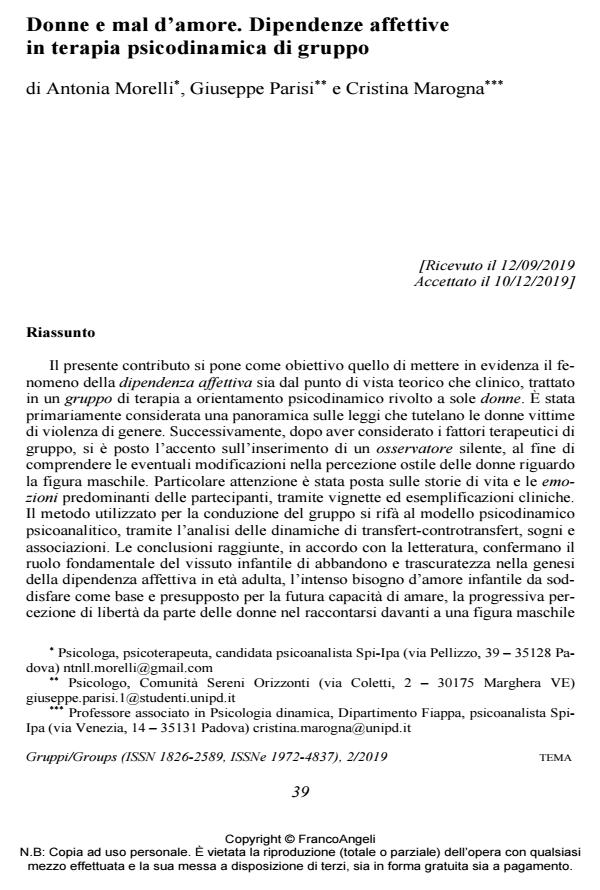Women and love sickness. Love addictions in group psychodynamic therapy
Journal title GRUPPI
Author/s Antonia Morelli, Giuseppe Parisi, Cristina Marogna
Publishing Year 2020 Issue 2019/2
Language Italian Pages 17 P. 39-55 File size 196 KB
DOI 10.3280/GRU2019-002004
DOI is like a bar code for intellectual property: to have more infomation
click here
Below, you can see the article first page
If you want to buy this article in PDF format, you can do it, following the instructions to buy download credits

FrancoAngeli is member of Publishers International Linking Association, Inc (PILA), a not-for-profit association which run the CrossRef service enabling links to and from online scholarly content.
The main objective of this article is to highlight the phenomenon of love addiction both theoretically and clinically, treated in a psychodynamic oriented therapy group aimed at women only. It was primarily considered an overview of laws protecting women victims of gender-based violence. Subsequently, after considering the group therapeutic factors, emphasis was placed on the inclusion of a silent observer, in order to understand any changes in women’s hostile perception of the male figure. Particular attention has been paid to the participants’ life stories and predominant emotions, through clinical examples. The method used for conducting the group is based on the psycho-dynamic psychoanalytic model, through the analysis of the dynamics of transference-countertransference, dreams and associations. The conclusions reached, in agreement with the literature, confirm the fundamental role of the childhood experience of abandonment and neglect in the genesis of affective addiction in adulthood, the intense need for childhood love to be satisfied as the basis and presupposition for the future capacity to love, the progressive perception of freedom by women in telling themselves in front of a non-judging male figure, and the decisive role of the group framework in supporting and promoting the well-being of the participants.
Keywords: Love addiction, Group, Women, Observer, Emotions.
Antonia Morelli, Giuseppe Parisi, Cristina Marogna, Donne e mal d’amore. Dipendenze affettive in terapia psicodinamica di gruppo in "GRUPPI" 2/2019, pp 39-55, DOI: 10.3280/GRU2019-002004